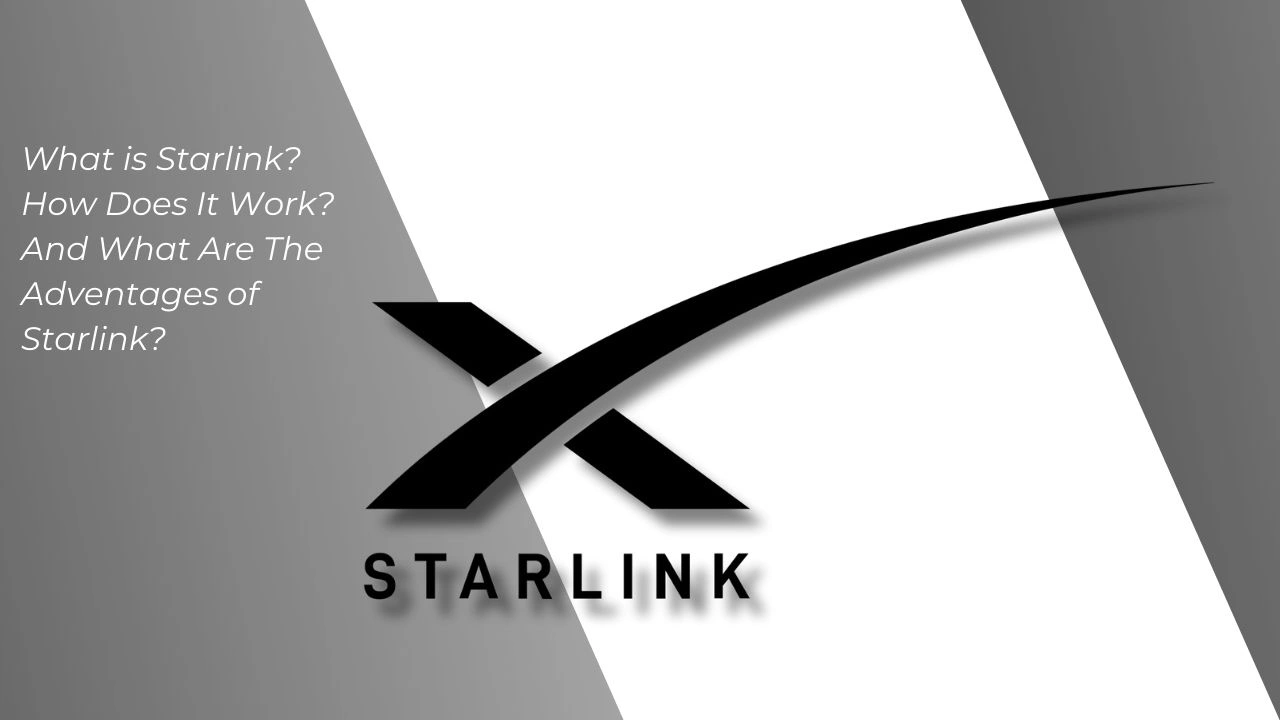What is Starlink and How Does it Work? – Starlink is a huge leap of human invention, introduced back in 2019 this piece of technology has an ever growing popularity over the years.
So, what is Starlink? How does it work? What are the advantages of Starlink? Let’s find out!
Table of Contents
What is Starlink?

Starlink is an internet service that beams signals down to Earth from a massive network of satellites circling close to our planet.
Also Read
These satellites, called a constellation, work together with ground stations to deliver high-speed internet access to remote and underserved areas.
Launched by SpaceX, the company behind rocket technology, Starlink aims to bring high-speed internet to every corner of the globe.
Elon Musk, the visionary behind SpaceX, has a grand plan for Starlink. His goal is to launch a staggering 42,000 small satellites over the next few decades.
These satellites will create a giant network orbiting Earth at just 340 miles above us, bringing internet access to everyone, everywhere.
Currently, there are already 4,368 Starlink satellites in operation, according to BroadbandNow, marking significant progress towards this ambitious goal.
How does Starlink Works?

Starlink isn’t reinventing the wheel, but it’s aiming to revolutionize satellite internet. Unlike traditional cable or fiber internet that uses physical lines, Starlink leverages a network of satellites.
These satellites, each a lightweight, flat disc weighing around 573 pounds, zip around Earth in low-orbit (LEO) and communicate via radio waves through the vast emptiness of space. Multiple satellites can hitch a ride on a single SpaceX Falcon 9 rocket.
The key to Starlink’s success lies in its ambitious scale. SpaceX envisions a massive constellation of nearly 42,000 of these miniature satellites, called CubeSats.
This dense network, orbiting close to Earth, creates a critical advantage: low latency. For Starlink, achieving minimal delay is crucial because it unlocks the potential for edge computing, where processing power is brought closer to user devices.
The traditional challenge of building a global network with low latency in outer space becomes much more manageable with Starlink’s innovative approach.
Advantages of Starlink

1. Low Latency
Starlink’s low-orbiting satellites (LEO) give it a significant advantage over traditional high-orbiting satellites (GEO).
With a latency of just 27 milliseconds compared to GEO’s 477 milliseconds, Starlink offers much faster data transfer and improved internet responsiveness, leading to a better overall user experience.
2. High Speed
Starlink’s initial launch provided download speeds of up to 100 Mbps and upload speeds of 20 Mbps.
However, recent testing has demonstrated remarkable improvements, with download speeds reaching up to 222 Mbps and upload speeds hitting 24 Mbps.
These impressive speeds enable users to enjoy seamless online experiences, including HD streaming, online gaming, and other internet-based activities.
3. Easy Installation
Starlink’s user-friendly terminal, featuring an integrated antenna and Wi-Fi router, streamlines the installation process.
Guided by clear instructions and a helpful app, you can have your Starlink system up and running in less than 30 minutes.
4. Huge Coverage
The one thing that makes Starlink shine is its availability even in remote locations where traditional internet options are scarce or unavailable.
Unbound by the constraints of extensive cable networks, Starlink maintains connectivity even when conventional telecommunications infrastructure falters.
This unwavering reliability makes Starlink an invaluable solution for bridging the digital divide in underserved areas.
There you go! Everything that you need to know about Starlink from its definition to its advantages.
But remember, even a company as big as SpaceX needs to follow the regulation and policy of Radio Frequency Technology in Indonesia. This king of product must be certified by DJID. So, check this link about DJID certification if you want to know more about this subject!











